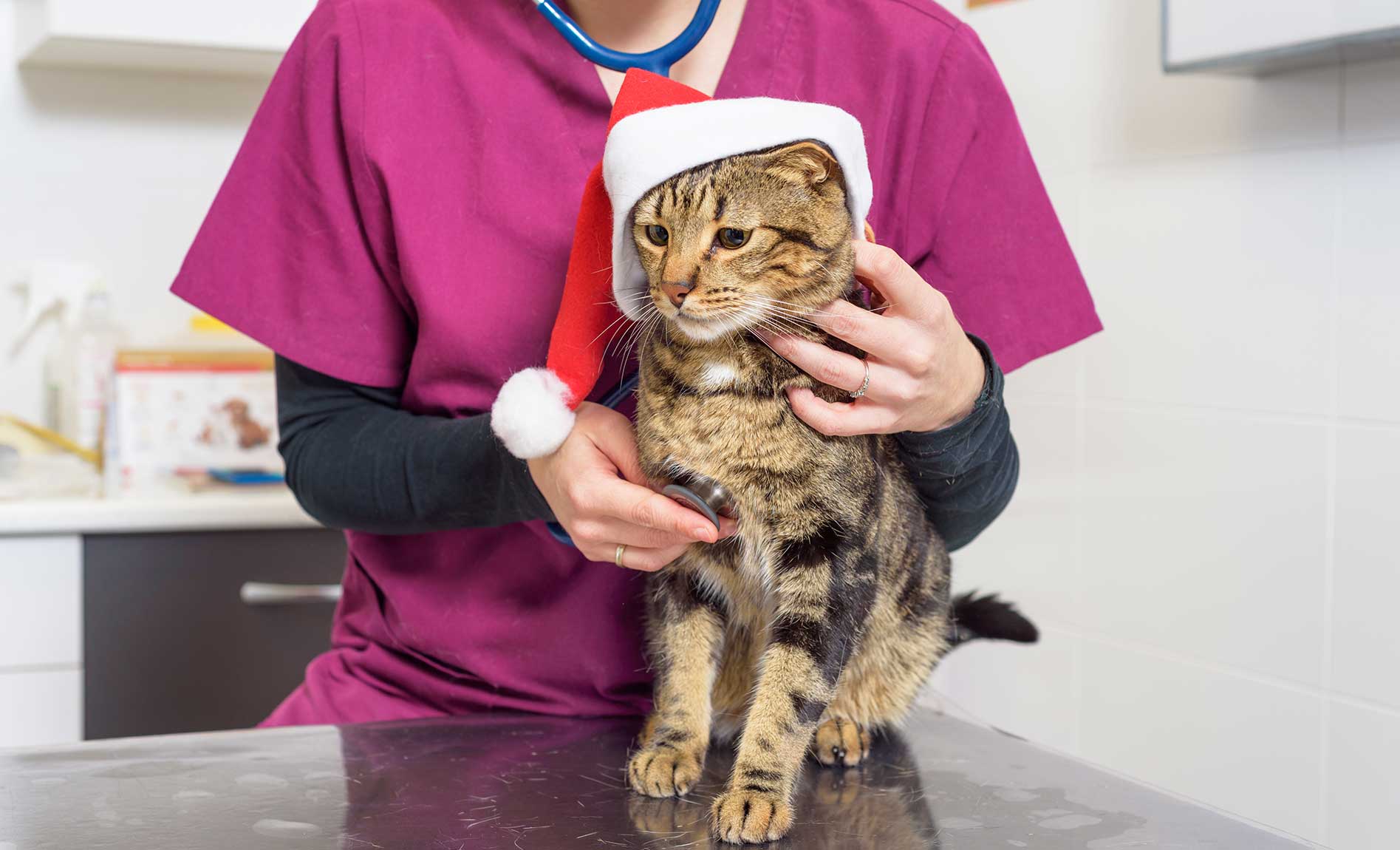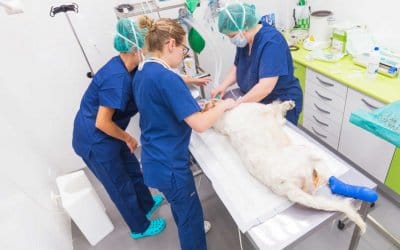As the holiday season approaches, are you dreading the thought of trying to handle all that chaos with a bare-bones staff? Instead of piling on the extra work that comes with last-minute client requests for prescription refills, pet boarding reservations, and wellness appointments, start handling these tasks now. Here are eight ways to prevent being overwhelmed this holiday season, even with a veterinary staffing shortage.
1. Send out notifications to clients for boarding reservations
Many boarding facilities fill up quickly around popular travel times, such as the holiday season, but clients still like to wait till the last minute to try to book a reservation. Don’t let your clients procrastinate this year, and make things easier on your team, by encouraging pet owners to reserve boarding spots now. Send “Book Now!” app notifications to your client list, post countdown timers on social media, and even urge your clients to book holiday reservations when they’re picking up their pet from their current stay.
If your boarding facility will be short on space because of a staffing shortage in that particular department, persuade clients to book in advance by doing a small promotion. For example, offer a free pet bath if you reserve your spot now for the November and December holidays.
2. Encourage clients to update their pet’s vaccinations before traveling
Around the holidays, you’re likely hit with a surge of requests for vaccination updates. Clients may have forgotten to schedule appointments to update their pet’s Bordetella vaccination, since this one is not always given unless the dog is a routine boarder or doggy daycare attendee. If you offer boarding at your own veterinary hospital, create app notifications and social media posts that list the required vaccinations for canine and feline boarding. Inform pet owners that it’s best to have vaccinations updated at least two weeks prior to boarding to give their immune system ample time to mount a response, so they should schedule their vaccination appointments now. Even better, they can schedule their own appointments without tying up your phone lines by scheduling through your practice app or Facebook page.
In addition, remind your clients that they can request their pet’s records now if they are up to date, so they can have them ready and in-hand for boarding and traveling. Or, let clients know they can access their pet’s vaccination history through your veterinary practice app, removing the record-request-and-fax task from your CSRs’ plate.
3. Make space for “sanity blocks” in your schedule
With the veterinary staffing shortage, you’re likely pushed to — and over — the limit each day. Give your staff time to take a breather during appointments by scheduling “sanity blocks.” These blocks are intended to give your staff some breathing room to get caught up with tasks or take a much-needed break in their day.
4. Remind clients to refill their pet’s medications now
Remind clients to take inventory of their pet’s medication and prescription food, and to request refills now to ensure they’re prepared for the next couple of months. Reiterate that your veterinary practice will be closed at certain times during the holidays, and that clients will be unable to pick up medication or food if they run out. By taking stock now and refilling needed prescriptions, your clients — and your team — will experience a less stressful holiday season.
5. Provide clients with emergency contact information
If you’re a general practice, ensure your clients can easily access contact information for your local emergency veterinary hospital. Record this number on your voicemail message, place it on your website, and create social media posts and app notifications that remind pet owners to reach out to an emergency facility during your closed holiday hours. In addition, provide pet poison hotline resources to your clients in case of toxin emergencies. Toxin ingestion, like chocolate, occurs more commonly around the holidays than any other time of year.
6. Stock up on supplies commonly used in holiday emergencies
There’s nothing worse than an emergency case entering your veterinary practice, only to discover you are out of the key medication or supply to treat the issue. Although inventory management may fall to the wayside if you’re struggling with staffing challenges, double checking your stock before the holiday season hits is a vital part of being prepared for any disaster, especially those emergency situations you don’t normally see, like decoration and toxin ingestion.
Shipping times during the holiday season are typically extended, and it can take days longer for you to receive critical supplies, so stock up on the essentials prior to shipping slowdowns.
7. Notify clients about holiday closures
As the holidays approach, your clients have a ton on their minds, making it difficult for them to remember when your veterinary practice will be closed. Help the message sink in by beginning to notify your clients now about upcoming holiday closures in all possible formats (e.g., email, signage, push notifications, text, social media, etc.), then remind them several more times as the holiday approaches. Make these notifications easier for your team by scheduling their delivery in advance. Plan out and schedule your social media posts, app notifications, and text messages, while designing your in-clinic signs to hang on your door. This will help prevent last-minute scrambling.
8. Educate clients on solutions for travel anxiety and motion sickness
Do you experience an influx of clients requesting travel solutions for their pets around the holidays? Ask your clients if they plan on traveling with their pets during the holidays, and educate them on potential solutions for motion sickness and anxiety. Design multi-format notifications to encourage clients to request prescriptions prior to their big travel plans, especially if this will be the first time the pet is taking medication for vomiting or travel anxiety.
Need some help preparing for the upcoming holiday rush? Vetsource’s comprehensive solutions might just be the perfect holiday gift for your practice. Schedule a demo to learn how the platform can help your team, clients, and patients.



